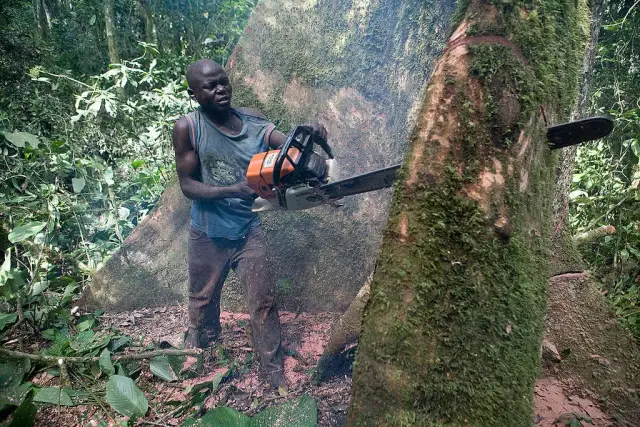The Government has Tuesday defended the decision to resume logging operations noting that the move seeks to create job opportunities, spur economic growth in the rural areas, and improve the livelihoods of millions of individuals and communities that depend on forests.
In addition, the State says that logging is strictly limited to gazetted plantation forest areas, ensuring the health and integrity of delicate natural forest ecosystems.
According to a statement sent to newsrooms, the decision to lift the ban was informed by an inventory of forest plantations which was undertaken by a Multi–Agency Taskforce between the years 2020 to 2022.
In the task force report, it was revealed that there was a total of 26,000 hectares of mature and over–mature forest plantation stocks.
According to the report, if these materials were not removed, they would eventually die and rot with the attendant colossal loss in revenue, which would otherwise be used in the restoration of degraded public forest areas.
The Multi–Agency Taskforce also oversaw the e-registration of saw millers, leading to the prequalification of applicants into various categories based on respective capacities.
Forest–adjacent communities, as social fences and friends of forests, are fully incorporated into the plantation forest value chain including harvesting to ensure they draw significant benefits.
While the license holders harvest the tree, they are only permitted to cart away the main log, while the community retains the tops and branches for domestic fuelwood or sale as firewood.
Communities are also allowed to farm in areas where trees have been harvested as part of the Government’s Plantation Establishment and Livelihood Improvement Programme (PELIS).
Besides, Kenya Forest Service (KFS) engages Community Forest Associations (CFAs) in seedling production, planting, weeding and silvicultural operations that include pruning and thinning of trees.
Further, CFAs provide scouts to protect forests from encroachment and related illegal activities.
KFS uses felling plans that define the ‘allowable cutting levels’. The principle of allowable cut dictates that the number of trees to be removed annually should be equal to the number of trees to be planted.
Annually, Government authorises the harvesting of a maximum of 5,000 hectares. This is in compliance with the guidance from the Auditor General, as well as, established sustainable harvesting and replanting capacity of KFS.
Through PELIS, forest-adjacent communities are permitted to engage in non-residential food production as they assist in the re-establishment of plantation trees.
All payments to KFS including taxes are automated to ensure compliance with Government tax regulations.
All payments are made before the license holders are permitted to harvest. The payments received by KFS are accounted for as Appropriation-in-Aid (A-in-A).
Harvesting of licensed plantation forest acreage follows a detailed security plan on access, control, and supervision of felling, evacuation of logs and postharvest reporting.
As part of the plan, an Entry Certificate is presented to the Forest Station Manager before the removal of harvested logs. The Forest Manager has the responsibility to ensure that license holders strictly adhere to the provisions of their licenses.
Upon completion of the felling activity, the Forest Manager issues an Exit Certificate as evidence of compliance with the harvesting protocol. As part of the chain of custody, the Forest Manager marks each harvested log before it exits the forest.
The mark is specific to the Station where the logs have been harvested. Execution of penalties in case of breach of established protocols are swift and punitive to all parties involved, including KFS officials.
Public forest plantations supply 31.4 million cubic metres of timber annually, while the demand for timber in the country is 47 million cubic metres, leaving a deficit of 15.6 million cubic metres. Timber is widely used in construction, furniture making, and various other industries.
By restoring plantation forest harvesting activities, the Government seeks to service the growing demand for timber in the country while ensuring sustainable forest management practices apply.
Finally, the Government says that the plantation forests are buffer zones for natural forest landscapes and that revenue from the sale of logs in plantation forests is used to supplement the costs of protection, conservation, and management of natural forests.



